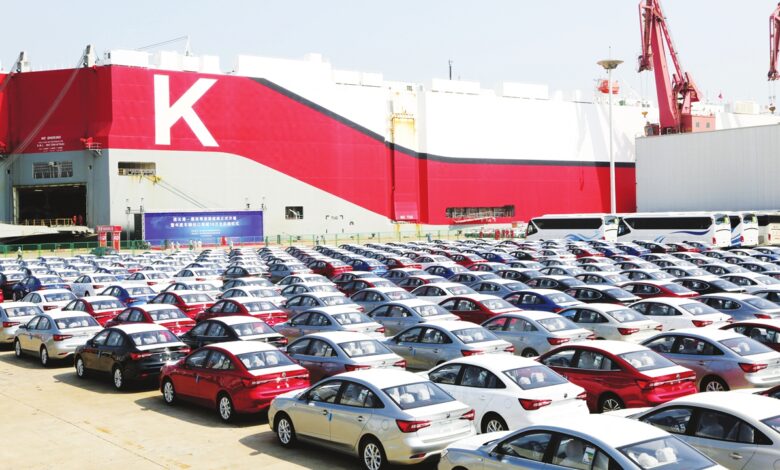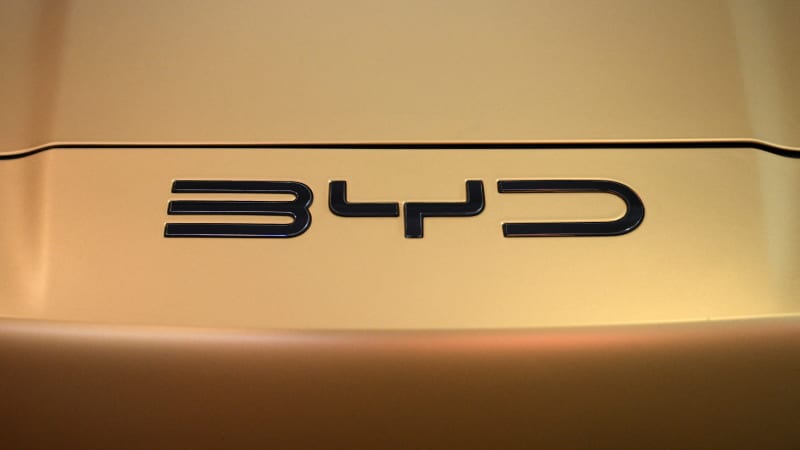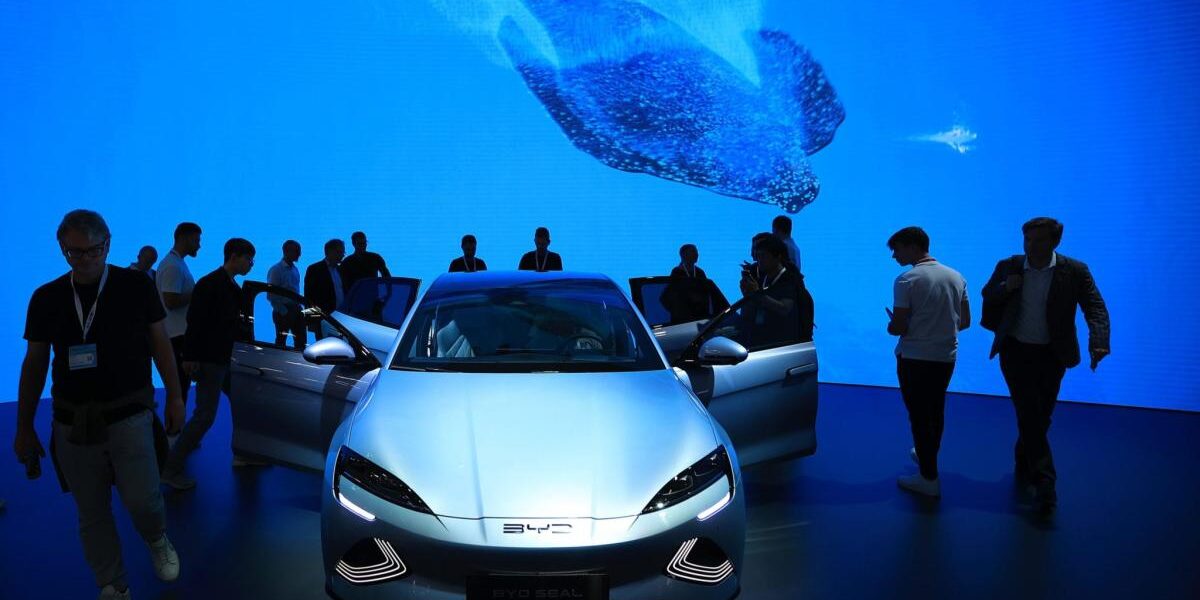The Rise of Chinese Automakers And Cheap Chinese Auto Parts Imports From Mexico Has U.S. Auto Giants Worried; How China Has Found An Alternative Route To Enter U.S. Markets
Mexico has emerged as a major hub for Chinese automakers, with competitive prices, longer warranties, and increased availability, leading to significant gains. However, the shift in the automotive sector has sparked discussions and concerns, especially regarding its impact on the North American market and the strategies proposed to address it. With substantial support from local and federal governments, these companies have rapidly expanded their market presence, initially dominating the Chinese market before venturing into international territories such as Mexico and Europe. Chinese automakers have made great strides, particularly in the electric vehicle segment, despite challenges in penetrating the U.S. market under their own brands. The success in offering affordable models and E.V.s has prompted regulatory responses and market adjustments in regions such as Europe and the United States.

Chinese automakers have seen a rapid surge in market share in Mexico due to factors such as competitive pricing, longer warranties, and increased availability.
Guillermo Rosales, president of Mexico’s auto retailers association, recently stated the remarkable shift in the market – just two years ago, vehicles manufactured in China accounted for less than 5% of domestic sales. Now, they represent over 25% of imports and 19.1% of total sales in Mexico.
According to AMDA’s data from January to July, out of the 743,930 light vehicles sold in Mexico, 142,090 were made in China, including both Chinese brands and others.
Among these, Chinese manufacturers like Chirey, JAC, M.G., and BAIC contributed significantly, with 69,464 vehicles sold. Further, 72,626 vehicles were produced in China by foreign automakers such as General Motors.

United States Auto Manufacturers Worried
In light of growing Chinese dominance in Mexico, an advocacy group for U.S. manufacturing proposed that the U.S. government should intervene to halt the import of low-cost Chinese automobiles and parts from Mexico stating that these imports, subsidized by the Chinese government, pose a significant threat to American car companies.
The group emphasizes the need to prevent automobiles and parts manufactured in Mexico by Chinese companies from taking advantage of the benefits of the North American free trade agreement, fearing that allowing Chinese auto imports could lead to widespread plant closures and job losses in the United States.
The report, highlighting the trade dynamics, notes that vehicles and parts produced in Mexico are eligible for preferential treatment under the U.S.-Mexico-Canada trade agreement, as well as for a $7,500 electric vehicle (E.V.) tax credit.
CEO John Bozzella of the Alliance for Automotive Innovation expressed concerns that proposed U.S. environmental regulations might inadvertently benefit China’s foothold in the American E.V. market.
In December, the U.S. Treasury issued guidelines to reduce reliance on Chinese suppliers in the E.V. supply chain, aligning with efforts to support domestic manufacturing and innovation.
The China Response
Responding to concerns, the Chinese embassy in Washington stated China’s high-quality manufacturing and innovation in the automobile industry, noting China’s role in providing cost-effective products of high quality to the global market.
Recent interest in the issue intensified further following reports of Chinese automaker BYD planning to establish an E.V. factory in Mexico; notably, BYD’s rise in the E.V. market, which surpassed that of Tesla, has ignited the growing competition between Chinese and U.S. automakers.

The Pricing Advantage
Chinese brands have particularly benefited from competitive pricing, with some SUVs being 17% cheaper than their counterparts from the U.S. and Japan.
Moreover, the availability of warranties up to 10 years, compared to the average three-year guarantees offered by other brands, has further stimulated demand.
Mexico holds strategic importance for China due to its geographical location, providing access to both North and South American markets. While only two Chinese automakers, JAC and BAIC, currently have assembly plants in Mexico, others like M.G., Great Wall Motors, and Geely have expressed intentions to establish manufacturing facilities in the country.
Looking ahead, the next frontier for Chinese companies in Mexico is the electric vehicle market. Although they are initially entering the market with internal combustion vehicles, Chinese automakers boast a wider variety of E.V.s in their product portfolio, signaling a shift towards electric mobility in the future.
However, Mexico’s energy policy, which heavily relies on fossil fuels, has impeded the progress of charging infrastructure for electric vehicles (E.V.s).
Despite the duty-free importation of E.V.s into Mexico, only 4.5% of car sales from January to May comprised hybrids or full E.V.s, a figure consistent with the same period in 2022.
![]()
The Growing Threat
Chinese automakers are increasingly posing a threat to their American counterparts, even without direct sales to U.S. consumers, and the sales of vehicles made in China are experiencing significant growth rates in Asia, Europe, and various other regions globally.
To put it into perspective, China surpassed Japan in 2023 to become the world’s leading country for car exports, reporting exports exceeding 5 million vehicles. This surge is driven by both established, government-owned companies like SAIC and Dongfeng, as well as newer players like BYD and Nio.
This rise in Chinese vehicle exports coincides with a decline in U.S. vehicle exports, with companies such as General Motors scaling back international operations.
According to the U.S. Bureau of Economic Analysis, U.S. auto exports in 2022 were 25% lower than their peak in 2016.
Formerly ranked fourth globally in vehicle exports, the United States dropped to sixth place in 2023, trailing behind Mexico, South Korea, and Germany, as reported by global consulting firm AlixPartners.
Carlos Tavares, CEO of Stellantis, the parent company of Chrysler, acknowledged that Chinese carmakers are their primary competitors, emphasizing the need for a vigorous response from global automakers like Stellantis.
The threat posed by Chinese automakers extends beyond export volumes. They have set new standards for vehicle production and pricing, releasing new models quickly and efficiently, including electric vehicles, a domain where traditional global automakers like G.M. and Ford have struggled to compete.

The Rising Star
BYD has emerged as a notable example of China’s automotive prowess, backed by support from the Beijing government. Last year, the company surpassed Tesla to claim the title of the world’s largest seller of electric vehicles.
During The New York Times’ Dealbook conference in November, Musk speculated that the top ten car companies might eventually comprise Tesla followed by nine Chinese car manufacturers.
According to estimates by the Rhodium Group cited in The Economist, BYD received around $4.3 billion in state support between 2015 and 2020. Additionally, Beijing has implemented subsidies to incentivize the purchase of electric cars.
BYD has achieved success with low-priced E.V.s, as shown by its BYD Seagull model. Priced at approximately $11,400, this compact E.V. significantly undercuts U.S. E.V. prices, even after factoring in America’s 27.5% tariff on Chinese-made vehicles.
Kristin Dziczek, an automotive policy advisor for the Federal Reserve Bank of Chicago’s Detroit branch, expressed concern about BYD’s competitive pricing during the organization’s Automotive Insights Symposium.
Mathew Vachaparampil, CEO of auto teardown and consulting firm Caresoft Global, estimates that BYD generates a profit of $1,500 per unit sold of the Seagull model, or at worst, breaks even.
Moreover, BYD is expanding its presence in international markets. Overseas sales accounted for approximately 10% of BYD’s total sales last year, doubling from the beginning of the year, as reported by Bernstein.
Analyst Eunice Lee from Bernstein noted that BYD’s success stems from its robust cost structure and innovative products, driven by a high level of vertical integration.
Despite pricing pressures in China, Bernstein anticipates a 29% compound annual growth rate in earnings for BYD through 2025, supported by the company’s focus on overseas markets and premium segments.

The Chinese Support
The expansion of Chinese automakers, strengthened by support from local and federal governments, initially began within China itself, gradually eroding the market share previously held by mandatory joint ventures between foreign and domestic automotive companies.
For instance, General Motors witnessed a significant decline in its market share in China, plummeting from approximately 15% in 2015 to 8.6% by the end of the third quarter of the previous year.
Mark Wakefield, the global co-leader of the automotive and industrial practice at AlixPartners, accentuated this shift during the Chicago Fed’s auto conference, noting the remarkable rise of new energy vehicle (NEV) brands in China’s domestic market.
These brands, which held a 26% market share a few years ago, have surged to over 50% in 2022, with projections indicating a trajectory towards two-thirds by the end of the decade.
This growth trajectory extends beyond China’s borders, with Chinese companies venturing into markets such as Mexico and Europe. They’ve primarily targeted these regions with affordable, budget-friendly models and electric vehicles, capitalizing on market segments that some American automakers have abandoned.
This influx has prompted the E.U. to implement government support measures for the E.V. industry.
Similarly, in Mexico, vehicles manufactured in China with internal combustion engines have surged from negligible market share to 20% of the country’s light-duty vehicle sales over the past six years, as noted by the Chicago Fed’s Dziczek positioning Mexico as the second-largest market for China-made vehicles after Russia.

United States To Be Conquered
Despite longstanding aspirations of Chinese automakers to penetrate the U.S. market under their own brands, none have yet succeeded.
However, China’s presence in the U.S. market is not negligible, with several auto brands owned by Chinese companies operating in the country, including Lotus, Volvo (including its Polestar spin-off), and niche E.V. maker Karma.
While regulatory challenges and protectionist measures pose hurdles, some industry experts believe that Chinese automakers could replicate the success of Japanese and South Korean brands in the U.S. market.
These brands initially entered with affordable, accessible vehicles, gradually enhancing their offerings in terms of quality, safety, and expanding into higher-end segments.
Carlos Tavares, CEO of Stellantis, drew parallels, suggesting that similar to Japanese automakers’ trajectory in the 1970s, Chinese automakers could potentially ascend to prominence in the U.S. market over time.
The Last Bit, global automotive industry is witnessing a significant shift driven by the rise of Chinese automakers.
With substantial support from local and federal governments, these companies have rapidly expanded their market presence, initially dominating the Chinese market before venturing into international territories such as Mexico and Europe.
Despite challenges in penetrating the U.S. market under their own brands, Chinese automakers have made notable strides, particularly in the electric vehicle segment; the success in offering affordable models and E.V.s has prompted regulatory responses and market adjustments in regions such as Europe.
While uncertainties remain regarding their prospects in the U.S., parallels drawn with the successes of Japanese and South Korean automakers suggest that Chinese brands could eventually establish a significant foothold in the American automotive landscape.
As the industry continues to evolve, the competition between established players and emerging contenders is expected to intensify, reshaping the dynamics of the global automotive market with competition intensifying further between emerging Chinese auto giants and U.S. auto companies on the backfoot for now!




